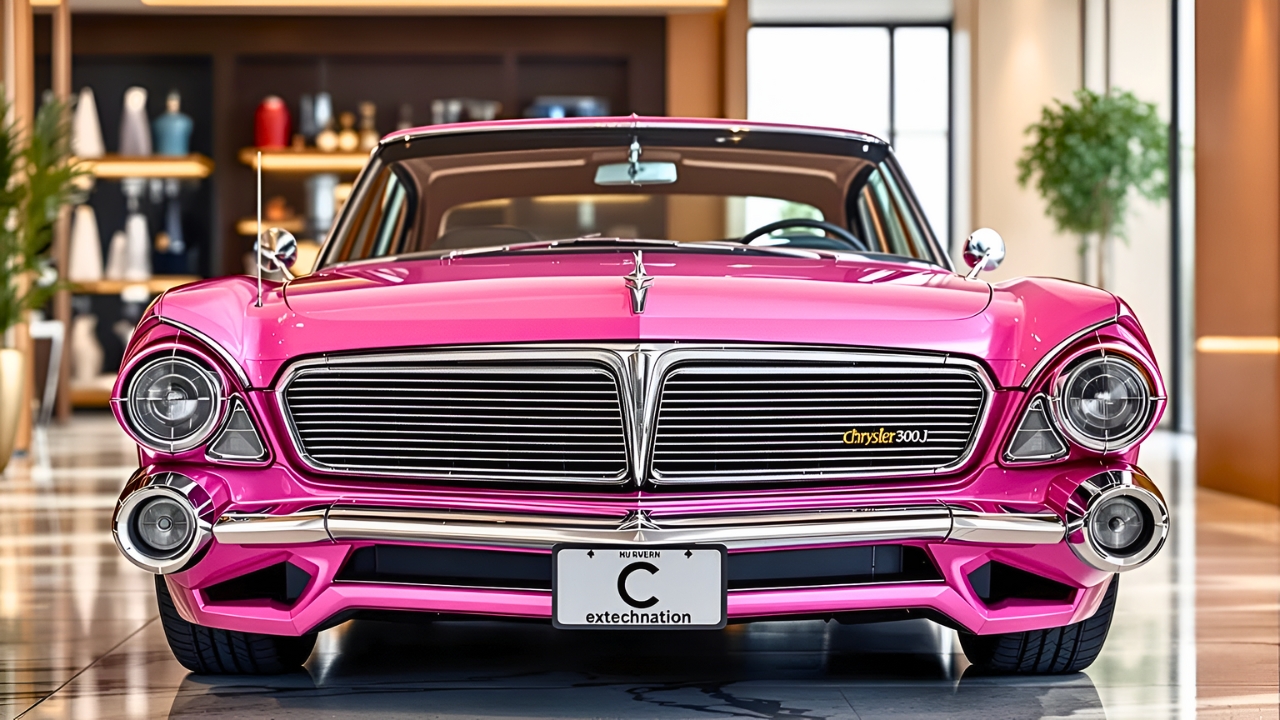There are some cars that fade quietly into the pages of history, and then there are cars like the 1963 Chrysler 300J a machine that refuses to be forgotten. Once overlooked, this classic American muscle car is making a surprising comeback among collectors and enthusiasts who appreciate its bold style, powerful engine, and unmistakable 1960s charisma. The story of the 300J isn’t just about horsepower and design; it’s about resilience, revival, and rediscovery.
The Birth of the Chrysler 300J
The Chrysler 300 series began in the mid-1950s as a bold statement of American performance and luxury. Each model carried a letter designation starting with the 1955 Chrysler 300, then 300B, 300C, and so on earning the series the nickname “The Letter Cars.” By the time the 300J arrived in 1963, the series had already built a reputation for blending brute power with premium refinement.
The 1963 Chrysler 300J was a continuation of that legacy. It replaced the 300H, skipping the “I” to avoid confusion with the number one. Chrysler equipped the 300J with a massive 413 cubic inch V8 engine producing 390 horsepower. It was paired with a TorqueFlite automatic transmission that delivered smooth yet forceful acceleration. For its time, the 300J was a serious performer capable of speeds that rivaled the top muscle cars of the era, all while maintaining a sophisticated presence on the road.
A Design Ahead of Its Time
Styling was one of the key aspects that set the 300J apart. The car featured a sleek, aerodynamic profile that was both elegant and aggressive. The long hood, clean body lines, and sculpted rear fins gave it an unmistakable identity. The front grille carried the traditional Chrysler cross design, flanked by quad headlights that gave it a commanding appearance.
Inside, the 300J showcased Chrysler’s dedication to luxury. The interior came with bucket seats, a full-length center console, and high-quality materials that reflected the company’s ambition to offer performance without sacrificing comfort. The dashboard layout was futuristic for its day, with chrome details and round gauges that made the driver feel like they were in control of something special.
Why It Was Almost Forgotten
Despite its strengths, the 1963 Chrysler 300J didn’t enjoy the commercial success it deserved. Only 400 units were produced, making it one of the rarest models in the Letter Car series. The early 1960s marked a shift in consumer preferences — buyers wanted smaller, sportier, and more affordable cars. The 300J, with its large dimensions and luxury price tag, didn’t fit the new trend.
Another factor was competition. The rise of Pontiac’s GTO and Ford’s performance models captured the attention of younger drivers. Chrysler’s approach was more mature, focusing on refinement rather than raw aggression. As a result, the 300J quietly disappeared from showrooms after 1963, and the next model, the 300K, took a slightly different direction.
The Revival of a Forgotten Icon
Fast forward to today, and the 1963 Chrysler 300J is finding a new generation of admirers. Collectors and restoration experts have begun to recognize its unique place in American automotive history. Its rarity has made it a sought-after classic, and well-preserved examples now command impressive prices at auctions and car shows.
What’s driving this revival? Enthusiasts point to its perfect blend of performance, design, and heritage. The 300J represents an era when Chrysler wasn’t afraid to push boundaries. It’s a reminder of a time when cars were not just modes of transportation but statements of ambition and creativity. Restorers appreciate the craftsmanship and mechanical simplicity of the vehicle, which allows for authentic rebuilds that preserve the original spirit of the car.
Performance That Still Impresses
Even by modern standards, the 300J’s powertrain remains impressive. The 413 V8 engine, equipped with the famous “ram induction” system, delivered instant torque and a deep, unmistakable exhaust note. It wasn’t just fast for its size; it was refined. The car handled smoothly, offering stability and control uncommon in many performance cars of the early 1960s.
On the open road, the 300J was a grand touring machine in every sense. It offered comfort for long drives and enough muscle to remind you that it belonged to the high-performance club. It was the car for drivers who wanted power with class something Chrysler achieved beautifully.
Why It Matters Today
The resurgence of interest in the 1963 Chrysler 300J highlights a broader trend among car enthusiasts: a growing appreciation for vehicles that combine luxury and performance. Unlike the raw, stripped-down muscle cars that followed later in the decade, the 300J carried itself with grace. It proved that sophistication could coexist with speed.
In many ways, the 300J was ahead of its time. It predicted the evolution of the grand touring concept powerful cars designed for comfort and long-distance performance. Today, as classic car culture continues to thrive, the 300J stands as a bridge between eras, representing both the ambition of the past and the craftsmanship that continues to inspire modern automotive design.
Conclusion
The 1963 Chrysler 300J is no longer just a forgotten chapter in Chrysler’s history. It has become a symbol of rediscovery a car that reminds us of the elegance and power that defined American automotive engineering in the early 1960s. For collectors and enthusiasts, the revival of the 300J isn’t just about restoring metal and chrome; it’s about bringing back a spirit that once defined an era. They tried to erase it, but the 300J is roaring back, stronger and more admired than ever.
Disclaimer
This article is intended for informational and historical purposes only. All details about the 1963 Chrysler 300J are based on publicly available records and enthusiast sources. Prices, availability, and restoration details may vary depending on condition, location, and market trends.
